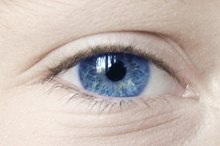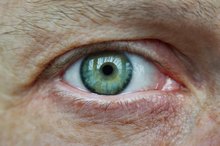Exercise & Posterior Vitreous Detachment
Being diagnosed with any kind of serious eye problem can be frightening. You start having symptoms, you make the appointment, the doctor pours a ton of drops into your eyes then blinds you with bright light. He spouts off some mumbo jumbo medical jargon and sends you on your way. If you have recently been diagnosed with a posterior vitreous detachment you may be feeling a little overwhelmed. You may be wondering what types of restrictions you should adhere to, including whether or not you can resume your normal exercise routine. .
What is a Posterior Vitreous Detachment?
The posterior vitreous is a gel substance that fills the interior cavity of the eye between the lens and the retina. The vitreous is comprised of collagen, glycosaminoglycans and hyaluronic acid. As the eye ages the hyaluronic acid breaks down, the collagen fibrils lose their support, and ultimately the vitreous begins to detach away from the retina. When the vitreous collapses an annular ring, or Weiss Ligament, floats freely in they eye 1. This is a normal change that happens as the eye ages 1. It occurs usually when a person is in their 60's.
- The posterior vitreous is a gel substance that fills the interior cavity of the eye between the lens and the retina.
- As the eye ages the hyaluronic acid breaks down, the collagen fibrils lose their support, and ultimately the vitreous begins to detach away from the retina.
Symptoms of a Vitreous Detachment
What Do Black Spots in Vision Mean?
Learn More
One common symptom of a vitreous detachment is seeing a large floater (this is the Weiss ligament). Another common symptom is seeing flashes of light. These flashes are usually noted in the temporal visual field. Very commonly these flashes are most noticeable when a person shuts off a light or looks in an extreme field of gaze. Usually the vision is not decreased, but a cloud or cobweb is often detected floating across the field of vision.
- One common symptom of a vitreous detachment is seeing a large floater (this is the Weiss ligament).
- Usually the vision is not decreased, but a cloud or cobweb is often detected floating across the field of vision.
Risks associated with a Posterior Vitreous Detachment
A posterior vitreous detachment in itself is normal. However, the attachment between the retina and vitreous is very strong. As the vitreous begins to collapse and tear away from the retina, sometimes this attachment is so strong that a tear or break can occur in the sensory retinal tissue as the vitreous separates from it. This break can in turn develop into a retinal detachment. A retinal detachment is a true ocular emergency requiring immediate surgery. Signs of a retinal detachment include an increase in floaters, a veil or curtain over the vision or an increase in flashes. If you start developing any of these symptoms you should contact your eye care provider immediately.
- A posterior vitreous detachment in itself is normal.
- As the vitreous begins to collapse and tear away from the retina, sometimes this attachment is so strong that a tear or break can occur in the sensory retinal tissue as the vitreous separates from it.
Exercise and Posterior Vitreous Detachment
How Long Before Resuming Normal Exercise After a Retinal Detachment?
Learn More
Strenuous exercise should be avoided for six weeks after the onset of a posterior vitreous detachment. This is the time when the retina is most at risk for detachment. Avoid activities that are jarring such as running, aerobics, and basketball. Also avoid heavy lifting. After the diagnosis of a posterior vitreous detachment is made, typically you will be seen at a six to eight week interval following the initial visit. Your eye care provider will be able to determine if the vitreous is completely detached and the tension on the retina is gone. Wait for the all clear from your doctor to resume your regular activities.
- Strenuous exercise should be avoided for six weeks after the onset of a posterior vitreous detachment.
- After the diagnosis of a posterior vitreous detachment is made, typically you will be seen at a six to eight week interval following the initial visit.
Related Articles
References
- "The Wills Eye Manual"; Rhee, Douglas J. and Mark F. Pyfer; 1999
- Review of Optometry (Online)
- Boyd K. Retinal detachment: Torn or detached retina symptoms. American Academy of Ophthalmology. Updated March 1, 2016.
- National Eye Institute. Retinal detachment. June 26, 2019.
- National Eye Institute. Types and causes of retinal detachment. Updated July 9, 2019.
- National Eye Insititute. Vitreous detachment. Updated July 11, 2019.
- American Society of Retina Specialists. Posterior vitreous detachment.
- Boyd K. Retinal detachment: Torn or detached retina treatment. American Academy of Opthalmology. Updated March 2016.
- Thompson JT. Retinal tears, American Society of Retina Specialists (ASRS). 2016.
Writer Bio
Tonya Edwards began writing professionally in 2011 for various websites. She is currently an optometrist and lives in Michigan. Edwards holds a Bachelor of Science in biology from South Dakota State University with minors in Spanish and chemistry. She has a doctorate from the Michigan College of Optometry.







